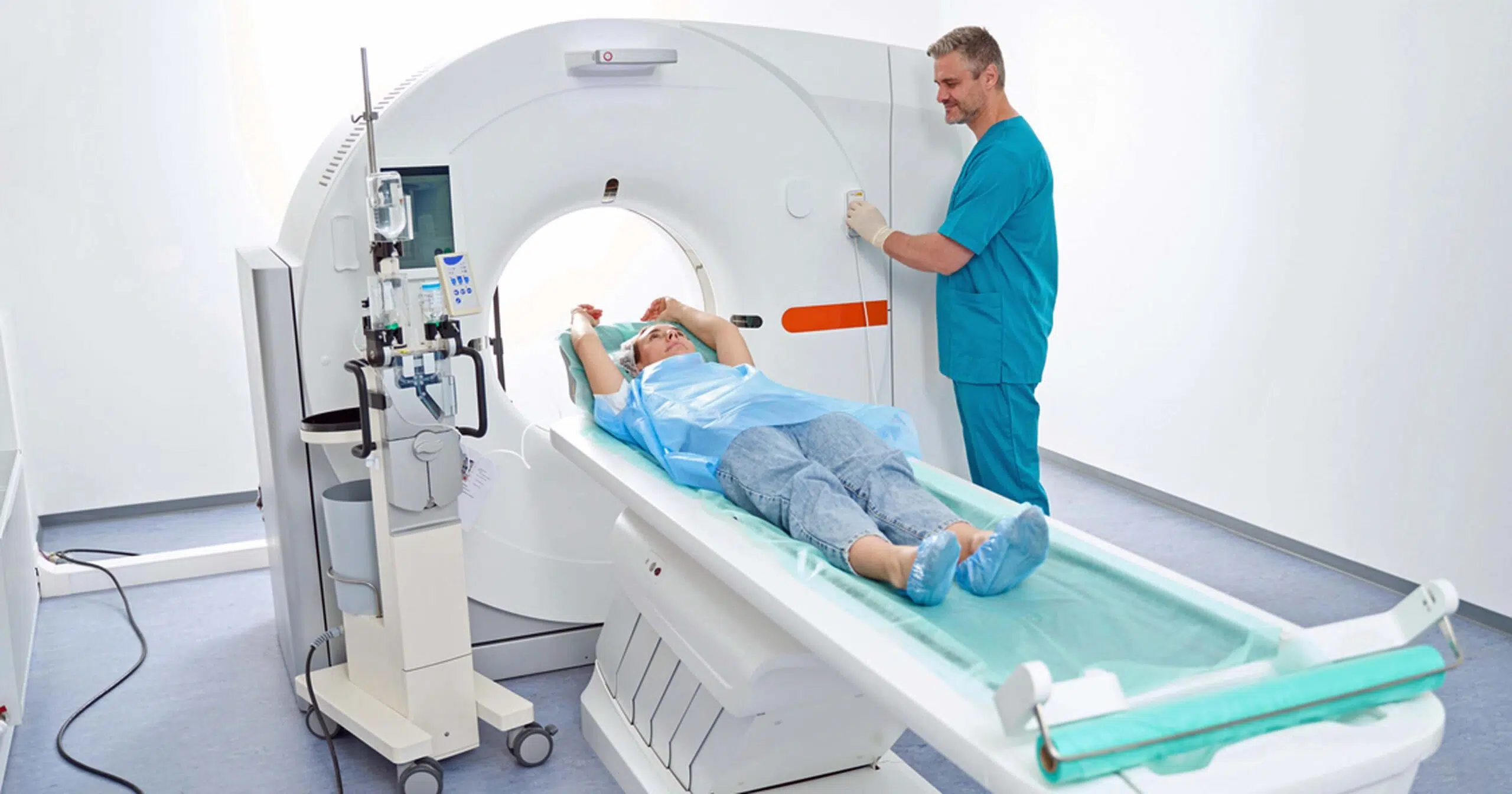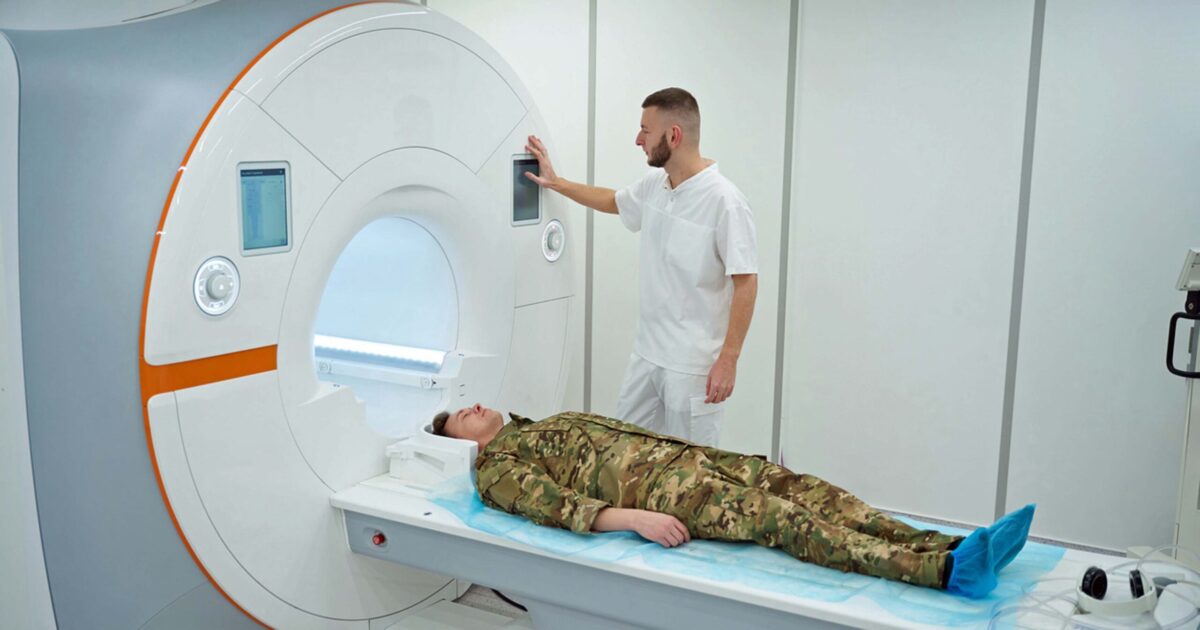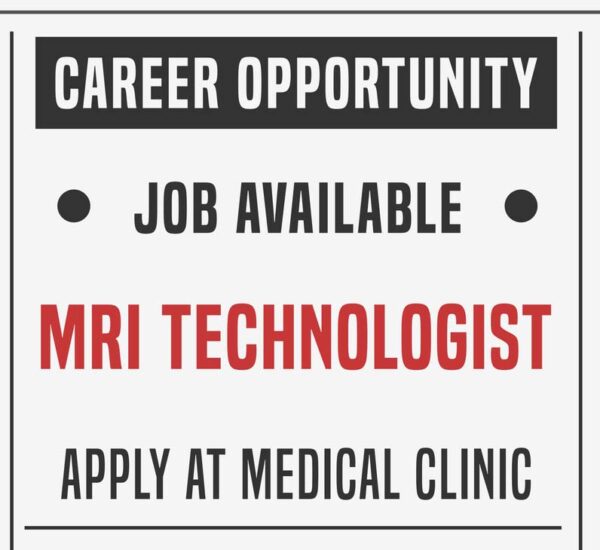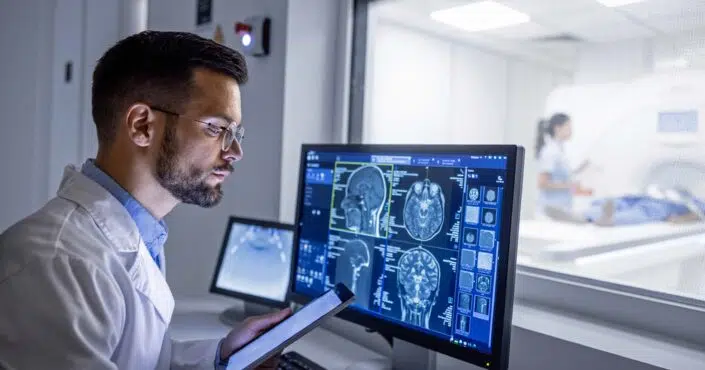The medical imaging field is a distinct career path that requires an aptitude for sophisticated machinery and specialized skills. Magnetic resonance imaging (MRI) and computed tomography (CT) scans have been in regular use since the 1970s and remain a gold standard in making diagnoses. Exploring the distinctions between CT vs. MRI technologists reveals much about their unique roles within allied health. Let’s explore the distinct roles that CT and MRI techs play in driving advancements in diagnostic capabilities and enhancements in patient care.
CT vs. MRI Tech: What’s the Difference?
The main difference between CT technologists and MRI technologists lies in their technology and techniques. CT technologists are radiologic technologists who operate CT scanners, which utilize X-ray technology to capture detailed images of tissues, organs and skeletal structures. This method provides a clear view of internal anatomy and allows for quick diagnosis of various conditions.
On the other hand, MRI technologists work with MRI machines, which use powerful magnetic fields and radio waves to create highly detailed images of the body’s internal structures. MRI scans excel in showing soft tissues and detecting abnormalities that might not be visible with CT scans.
The choice between CT vs. MRI technology depends on the specific diagnostic needs and the type of images required for accurate assessments.
How Do You Become a CT Tech?

Before diving into a career as a CT tech, it’s crucial to understand the pathway and time commitment involved.
Education Requirements
After graduating high school, you must gain admission to an accredited radiologic technology program. These programs usually take 1 to 2 years to complete and are offered at community colleges or vocational schools. Upon graduation, you earn an associate degree in radiologic technology or a related field, which you need before you can apply for CT technologist jobs.
Certifications
Aspiring CT techs should pursue certification from the American Registry of Radiologic Technologists (ARRT). To earn ARRT certification, you must:
- Hold an appropriate associate degree
- Complete an ARRT-approved course in computed topography
- Complete 16 hours of structured education
- Fulfill 125 computed topography procedures
- Earn an ARRT primary credential in radiography, nuclear medicine or radiation therapy
- Pass the CT exam containing 165 scored and 30 unscored questions
Many states require a state license for radiologic technologists, often using ARRT credentials in their licensing process. Although some states, like Georgia, don’t license medical imaging professionals, holding ARRT certification is valued by many employers. It demonstrates a commitment to high-quality patient care and ongoing professional development.
How Do You Become an MRI Tech?

To become an MRI technologist, you must grasp the commitment involved to ensure it matches your career aspirations.
Education Requirements
To become an MRI technologist, you generally need an associate or a bachelor’s degree in MRI technology, radiography or a related field and then complete an MRI tech training program. These accredited programs provide coursework in anatomy, patient care and MRI physics. The candidate can complete these courses in 12 to 24 months.
Certifications
Aspiring MRI technologists can earn either the American Registry of Magnetic Resonance Imaging Technologists (ARMRIT) certification or the ARRT’s Registered Technologist (R.T.) in MRI certification (R.T.(MRI)).
ARMRIT certification signifies a technologist’s expertise, competence and dedication to delivering top-notch MRI services. Recognized in the MRI field, ARMRIT certification is frequently required or highly favored by employers across different healthcare environments. To earn this credential, you must fulfill one of the following education and experience requirements:
- Graduate from an ARMRIT-accredited MRI program with at least 1,000 hours of documented MRI clinical training.
- Graduate from an MRI Registered Apprenticeship Program with at least 2,000 hours of MRI clinical training.
- Graduate from a non-ARMRIT-accredited MRI tech program with at least 1 year of allied health education and 2,000 hours of documented MRI clinical training and hold state licensure.
- Be a cross-trainer from an approved medical imaging or allied health field with at least 1,700 hours of documented MRI clinical experience.
- Received on-the-job training that consisted of 4 years or 6,240 hours of documented full-time MRI clinical experience or hold an associate degree and completed 2,000 hours of full-time MRI clinical experience.
Once qualified, applicants must pass the 225-question certification exam with a score of 75 or better.
ARRT’s R.T.(MRI) is a specialized certification for radiologic technologists, demonstrating advanced expertise in MRI technology, including its physics, patient care and safety protocols. It’s intended for those with experience in radiologic technology who wish to specialize in MRI. Prospective employers recognize this certification as a symbol of advanced professional development and dedication to high standards in patient care.
You can earn this certification through the primary eligibility pathway by completing specific didactic and clinical competency requirements. Clinical competency includes competence in 17 mandatory procedures and 11 of 30 elective procedures. Applicants must pass the 220-question certification exam with a scaled score of 75 or better.
How CT vs. MRI Technologist Roles Vary
While CT and MRI tech roles share similarities in patient care and medical imaging, they also differ. Both require a solid understanding of human anatomy and physiology, but each role has unique skills and responsibilities. The table below outlines the key differences between these two specialties.
| CT Technologist | MRI Technologist | |
| Equipment | CT Scanner: Uses X-rays and a computer to create cross-sectional images of the body. It consists of a rotating X-ray tube, a detector array and a computer system.
X-ray Tube and Detector Array: The tube emits X-rays detected by sensors on the opposite side to create images. |
MRI Scanner: Utilizes a strong magnetic field, radio waves and a computer to create detailed images of internal structures. The main components include the magnet, gradient coils and radiofrequency coils. Radiofrequency Coils: Coils placed around the area being imaged to transmit and receive radio frequency signals. |
| Tech Skills | Machine Operation: Proficiency in using the CT scanner, including setting the appropriate parameters and ensuring optimal image quality.
Patient Positioning: Ability to correctly position patients for accurate scans while managing comfort and safety. Image Analysis: Skills in evaluating image quality, making necessary adjustments and performing preliminary reads. Contrast Administration: Expertise in administering contrast agents safely and understanding their effects on imaging. |
Machine Operation: Proficiency in operating the MRI scanner, including setting up the correct scanning protocols, adjusting parameters and optimizing image quality. Patient Positioning: Expertise in positioning patients accurately to capture the required anatomical views while considering patient comfort. Image Analysis: Ability to assess and interpret the quality of images, make adjustments and sometimes perform preliminary reads Troubleshooting: Skills to identify and resolve issues with the MRI system or images, including software and hardware problems. |
| Safety Considerations | Shielding: Using lead aprons and shields to protect patients and staff from unnecessary radiation exposure.
Dosage Monitoring: Applying dose-reduction techniques (e.g., adjusting exposure parameters, using high-quality imaging protocols) and monitoring radiation dose. Allergy Screening: Screening for allergies or adverse reactions to contrast agents before administration. Emergency Preparedness: Training in managing potential contrast reactions or other emergencies. |
Screening: Thorough screening for ferromagnetic objects or implants before entering the MRI room to prevent accidents. Training: Regular training on handling emergencies related to the magnetic field, such as dealing with projectile objects. Radio Specific Absorption Rate (SAR): Monitoring and managing SAR levels to ensure they remain within safe limits to prevent tissue heating. |
| Patient Interaction | Brief Time: CT scans are quicker.
Contrast Reactions: Technologists must monitor for and manage potential adverse reactions to contrast agents. Scan Preparation: Provide clear instructions on what to expect during the CT scan to help patients feel more at ease and improve scan accuracy. |
Extended Time: MRI procedures take longer. Noise and Confined Space: Technologists must address patients’ concerns about noise and claustrophobia, offering support and ear protection. Procedure Understanding: Educate patients about the MRI process to help reduce anxiety, leading to better imaging results. |
| Patient Challenges | Radiation Exposure: Technologists must manage and minimize radiation exposure, especially for patients needing frequent scans. | Metal Implants: Metal implants can interfere with MRI scans, requiring careful screening and alternative solutions. |
Career Prospects and Salary
Choosing a career in a growing allied health field is a great way to work in healthcare. CT and MRI technologists are seeing a surge in demand as healthcare services expand. The Bureau of Labor Statistics projects a 6% growth in this radiologic technology field and an 8% growth specifically among MRI technologists during the decade between 2022 and 2032.

CT vs. MRI Technologist Job Market
On July 29, 2024, Vivian Health’s job marketplace had 230 CT tech staff positions, compared to 137 MRI tech staff positions. The demand is significantly higher for travel roles, with 11,491 open CT tech travel jobs versus 3,923 MRI tech travel jobs. While both staff and travel CT jobs outweighed MRT tech jobs, Vivian posts new jobs hourly, and these numbers could flip.
How Much Do CT and MRI Technologists Make?
We used Vivian Health’s salary data collected at the end of July 2024 to compare some of the higher-paying travel CT and MRI tech jobs on our website by location. The table below shows weekly salaries, which include tax-free stipends for those who qualify.
| State | Average CT Tech Weekly Travel Salary | Average MRI Tech Weekly Travel Salary |
| California | $3,879 | $3,684 |
| Massachusetts | $3,837 | $3,421 |
| Vermont | $3,797 | $3,771 |
| Washington | $3,643 | $4,137 |
Healthcare technologist salaries typically depend on experience, location and education. The table below illustrates the hourly salary differences between CT vs. MRI techs in some of the highest-paying staff positions. Salary data is from Vivian Health at the end of July 2024.
| State | Average CT Staff Hourly Salary | Average MRI Staff Hourly Salary |
| California | $91 | $83 |
| Oklahoma | $33 | $36 |
| Texas | $43 | $46 |
Choosing the right CT or MRI technology path is crucial for aligning your career with your interests and strengths. To excel, consider advancing your education and pursuing specialized training. Contact educational institutions for guidance and connect with professionals through industry organizations and workshops. These steps support your growth and success in the CT and MRI fields.
Ready to explore more job opportunities and better wages in CT and MRI tech jobs? Sign up with Vivian Health to access various positions and competitive salaries tailored to your expertise. Start your journey toward a fulfilling career now.









